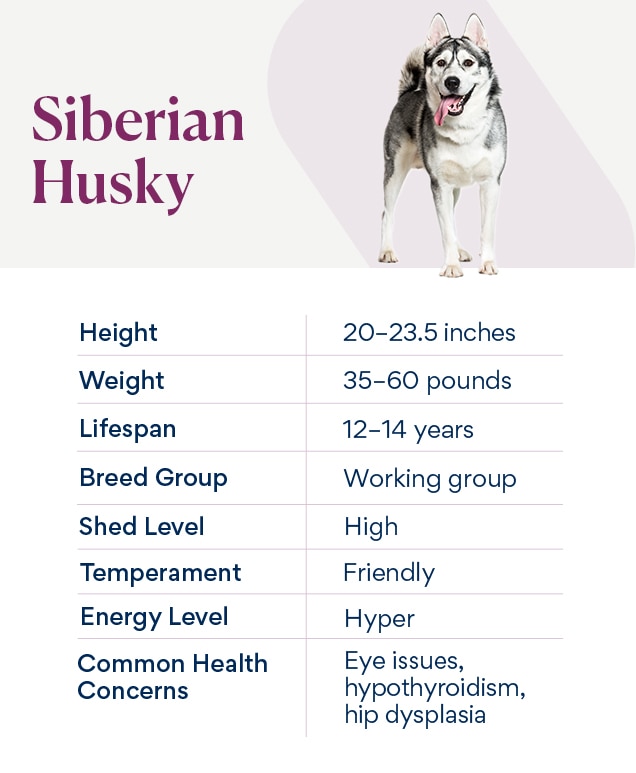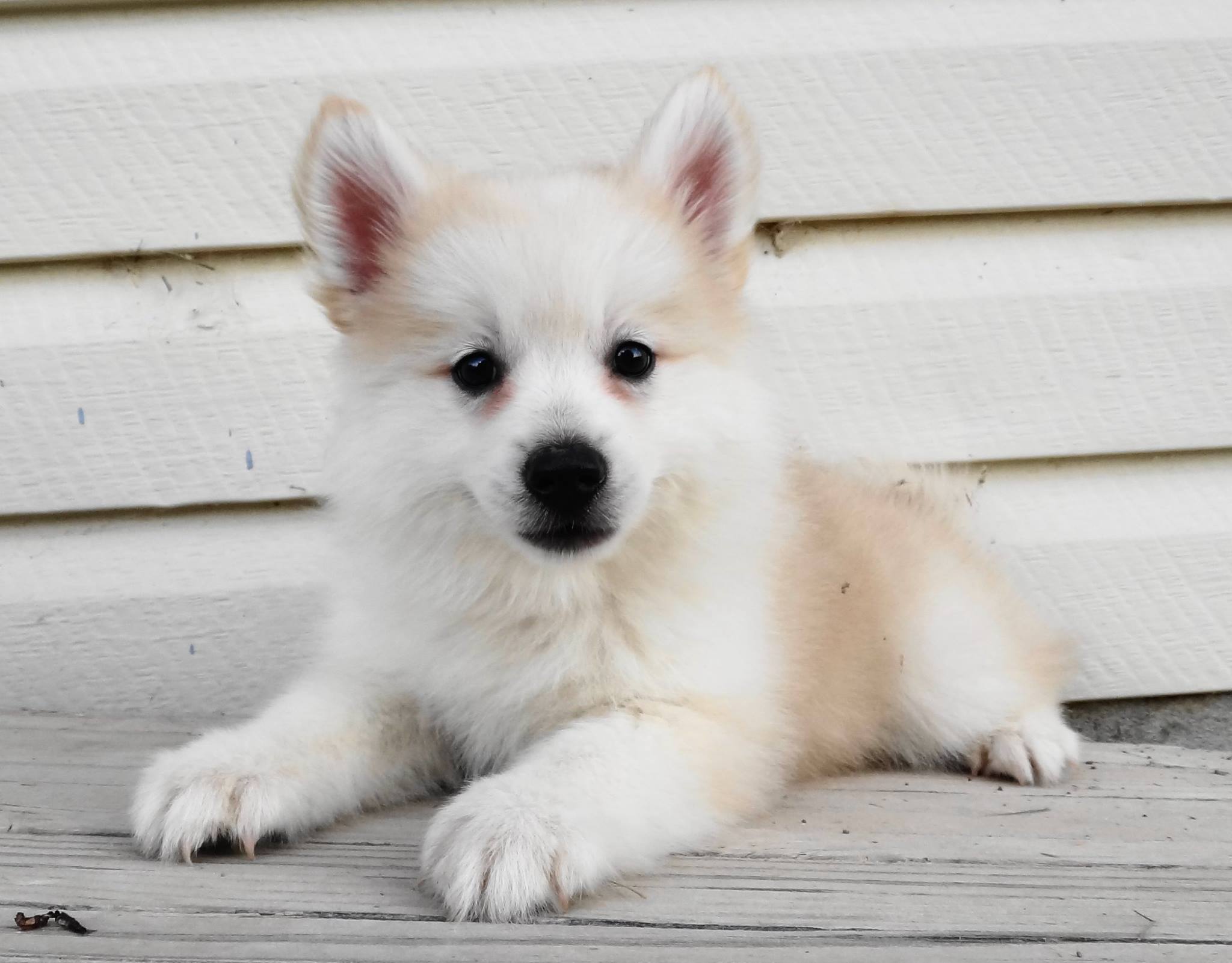A Pomsky typically reaches full size between 12 to 18 months of age. These designer dogs are a mix between a Pomeranian and a Siberian Husky, which largely influences their growth rate and final size.
Understanding when a Pomsky stops growing is crucial for owners to provide the right care and nutrition tailored to their development stage. The Pomsky breed, a popular choice for those who love Huskies but desire a smaller companion, has garnered significant attention for its striking appearance and friendly disposition.
Their growth can be monitored by regular check-ups with a vet to ensure they are on the right track. As social and energetic animals, Pomskies thrive in environments where they can receive plenty of exercises and mental stimulation, all of which contribute to their well-being as they mature into adulthood.
Unveiling The Pomsky Breed
Bursting with charm, the Pomsky emerges as a fuzzy bundle of joy. This breed captures hearts with its husky-like grandeur and small stature. Ideal for those who adore huskies but desire a smaller companion, Pomskies offer the best of both worlds.
Origins Of The Pomsky
The Pomsky is a crossbreed. Designers mixed the Siberian Husky with the Pomeranian. The goal was to craft a miniature husky. Though young in the dog world, Pomskies quickly gained huge popularity.
Physical Traits And Characteristics
Pomskies flaunt a mix of their parents’ traits. Physical features can vary, but they generally show:
- Size: Small to medium build, weighing between 20 to 30 pounds.
- Coat: Thick, fluffy fur in colors like gray, white, brown, and black.
- Eyes: Often striking blue, green, or hazel, sometimes bi-colored.
- Temperament: Smart, playful, and affectionate with a dash of Husky mischievousness.
Pomskies reach full size by 1 to 1.5 years. Their lifespan can be up to 15 years. Keeping them healthy includes proper diet, exercise, and love.
Understanding Pomsky Growth Patterns
Understanding the growth patterns of a Pomsky is key to ensuring their health. Like a fascinating tapestry, the development of this delightful hybrid unfolds in unique ways. Delve into the stages and factors that shape their growth.
Early Development Stages
Pomskies, a mix of Pomeranian and Husky, grow rapidly in their initial months. Witness these bundles of joy transform from tiny, dependent pups into spirited young dogs.
- Birth to 3 months: Fast growth, puppy learns to walk and play.
- 3 to 6 months: Teething begins, energetic and curious behaviors emerge.
- 6 to 12 months: Growth slows down, foundational training starts.
- 12 to 18 months: Near full growth, personality solidifies.
Factors Influencing Growth
Several factors contribute to how and when a Pomsky reaches full size.
| Factor | Impact on Growth |
|---|---|
| Diet | Quality food supports healthy development. |
| Exercise | Regular activity is crucial for growth. |
| Healthcare | Vet checks prevent growth-stunting issues. |
| Genetics | Parents’ size influences pup’s final stature. |
Determining Full Growth
Owners often wonder when their Pomsky will reach full size. Understanding when a Pomsky stops growing is crucial for providing the right care. This section will detail how to determine when a Pomsky is fully grown.
Age Of Maturity
Pomskies typically reach their size maturity between 12 to 18 months. Smaller dogs usually mature faster than larger ones. Since Pomskies are a mix of Pomeranian and Husky, their growth rate can vary.
Here’s a quick reference table:
| Age | Expected Size (% of Full Growth) |
|---|---|
| 3 Months | ~40% |
| 6 Months | ~75% |
| 12 Months | ~90-95% |
| 18 Months | 100% |
Signs Of Completed Growth
Physical changes slow down once a Pomsky nears full growth. Here are the telltale signs:
- No considerable change in weight or size for several months
- Plateaus in appetite
- Ribs are no longer as prominent, indicating a filling out process
- Calm behavior reflecting the exit from puppyhood
Regular vet visits can confirm growth status. Vets measure growth plates to see if they’ve closed, a signifier that growth has ended.
Size Expectations For A Full-grown Pomsky
Curious about a Pomsky’s full size? Pomsky lovers often wonder what size their fluffy friend will grow to be. As a mix between a Pomeranian and a Husky, a Pomsky’s mature size can be a bit of a delightful mystery. Let’s peek into the world of this cuddly breed and set some expectations about their weight and height once fully grown.
Average Weight And Height
The final size of a Pomsky can vary, but typically, they reach their full size by their first birthday. Let’s look at the common numbers to expect.
| Size Category | Weight Range | Height Range |
|---|---|---|
| Small to Medium | 15 to 25 pounds | 10 to 15 inches |
| Medium to Large | 25 to 35 pounds | 15 to 20 inches |
Variability In Size
Genetics play a big role in a Pomsky’s growth. With each Pomsky being unique, size can differ even within the same litter.
- A Pomsky’s parents largely determine its size.
- First generation Pomskies (50% Pomeranian, 50% Husky) often show the most size variety.
- Subsequent generations, like an F1b or F2 Pomsky, might have more predictable sizes.
Understanding these size variations can help future Pomsky owners set realistic expectations for their pets as they grow from playful puppies into full-grown companions.
Health Considerations During Growth
As your Pomsky journeys from a playful pup to a full-grown companion, health remains paramount. Proper care guarantees a smooth transition through this critical phase. Monitoring the development of your furry friend is essential for a healthy and happy adult life.
Nutrition For Optimal Growth
Just as children need balanced diets to thrive, Pomskies require specific nutrition for their growth spurt. A Pomsky’s diet impacts everything from their fur to their bones.
- Protein: Builds strong muscles and supports tissue repair.
- Fats: Essential for energy and cell function.
- Carbohydrates: Provide daily energy needed for play.
- Vitamins and Minerals: Key for preventing disease and promoting healthy growth.
Consult a vet to tailor a feeding plan that matches your Pomsky’s unique needs.
Common Health Concerns
Certain health issues can emerge as a Pomsky matures. Early detection ensures a swift response and better outcomes.
| Health Issue | Description | Preventative Action |
|---|---|---|
| Hip Dysplasia | Inherited condition affecting the hip joint. | Maintain a healthy weight, and avoid rough play. |
| Allergies | May cause itching and discomfort. | Identify triggers and provide necessary treatments. |
| Dental Issues | Can lead to further health complications. | Brush teeth regularly and provide dental-friendly toys. |
| Eye Problems | Pomskies may suffer from cataracts or corneal issues. | Schedule regular vet check-ups for early detection. |
Stay vigilant for signs of discomfort or unusual behavior, and keep regular vet visits for your Pomsky’s well-being.

Credit: www.petmd.com
The Importance Of Exercise & Training
A Pomsky, a blend of Pomeranian and Husky traits, needs regular activity.
Physical and mental health improve with proper exercise and training.
These dogs remain playful well into adulthood.
Regular workouts and training advance a Pomsky’s development.
Recommended Exercise Regimen
Every Pomsky needs daily physical activity. Tailoring exercise to its energy level is key. Begin with short, fun sessions. Gradually increase time as your Pomsky grows.
- Walks: Daily 30-minute walks keep your Pomsky fit.
- Play: Interactive toys engage their keen minds.
- Training: Obedience classes harness their intelligence.
Training Impact On Growth
Training shapes your Pomsky’s growth both mentally and physically. Learning commands and good habits early sets them up for a well-rounded maturity. Behavioral problems lessen with consistent training.
| Age | Training Focus |
|---|---|
| 2-4 Months | Basic commands, Gentle socialization |
| 4-6 Months | Leash training, Continued socialization |
| 6+ Months | Advanced commands, Behavioral refinement |
Common Myths About Pomsky Growth
Pomskies, the adorable mix of Husky and Pomeranian, carry a certain mystery regarding their growth. Various myths circulate about how big they can get and what affects their size. It’s crucial to unravel the truth behind these growth misconceptions.
Debunking Size Estimation Myths
Many believe a Pomsky’s paws can predict their adult size. Let’s expose these claims:
- Paw size offers little accuracy in predicting adult size.
- Pomskies are a mixed breed; they vary in size.
- Genetics play a more substantial role than paw size.
Misconceptions About Diet And Growth
Nutrition impacts growth, but common diet beliefs may mislead:
- More food doesn’t mean larger dogs; it risks obesity.
- A balanced diet is key to healthy development.
- Premium food won’t necessarily accelerate growth.
Always consult a vet for the best dietary plan for your Pomsky.

Credit: pomeranian-husky.com
Preparing For Your Pomsky’s Full Size
As your Pomsky matures from a fluffy puppy into their full adult size, knowing what to anticipate can help you provide the best care. Preparing for a Pomsky’s full growth involves understanding their physical and emotional development. Expect changes in size, behavior, and needs. Tailoring your home and routine to these changes ensures a happy, healthy life for your furry friend.
Suitable Living Spaces
A Pomsky needs ample room to romp and rest as it grows. Their energetic nature means space is crucial for exercise and play. Consider your living space: A house with a fenced yard suits a Pomsky best. Apartment dwellers must ensure regular park visits or long walks for their pet’s well-being. Inside, create a special area for your Pomsky with a cozy bed and plenty of toys.
Adjusting To Your Pomsky’s Adult Needs
A Pomsky’s dietary requirements will shift with age. Adult dogs need balanced meals, rich in nutrients, to maintain health and vitality. Regular vet check-ups and a consistent exercise routine keep your Pomsky fit. Mental stimulation remains vital; provide puzzles and training sessions for brain engagement. A structured routine with clear expectations helps your Pomsky feel secure as they reach full size.
- Choose nutrient-rich adult dog food
- Schedule regular veterinary visits
- Maintain daily exercise routines
- Provide mental stimulation through toys and training

Credit: www.petmd.com
Frequently Asked Questions For When Is A Pomsky Full Grown
How Big Will Pomsky Get?
A Pomsky typically grows to a size of about 10 to 15 inches in height and can weigh between 20 to 30 pounds when fully mature.
What Is The Rarest Pomsky Color?
The rarest Pomsky color is pure white. These dogs are highly sought after for their unique and striking appearance.
What Month Do Pomskies Shed The Most?
Pomskies tend to shed the most during spring and fall as they transition their coats for the changing seasons.
How Long Can A Pomsky Be Left Alone?
A Pomsky, being a social breed, can typically handle being alone for about 4 to 8 hours. Proper training can help them cope with longer periods.
Conclusion
Determining the time a Pomsky reaches full maturity can be fascinating. These mixed-breed canines typically hit their peak growth around 12-15 months. It’s vital to provide consistent training and nutrition to support their development. Remember, each Pomsky is unique; patience with their growth process is key.
Cherish every stage – they grow up fast!

